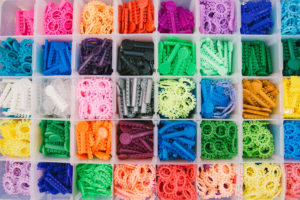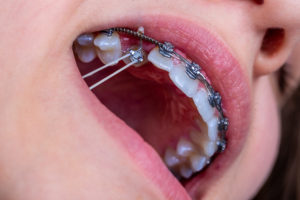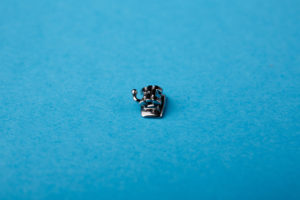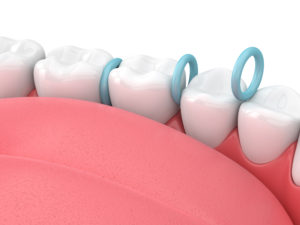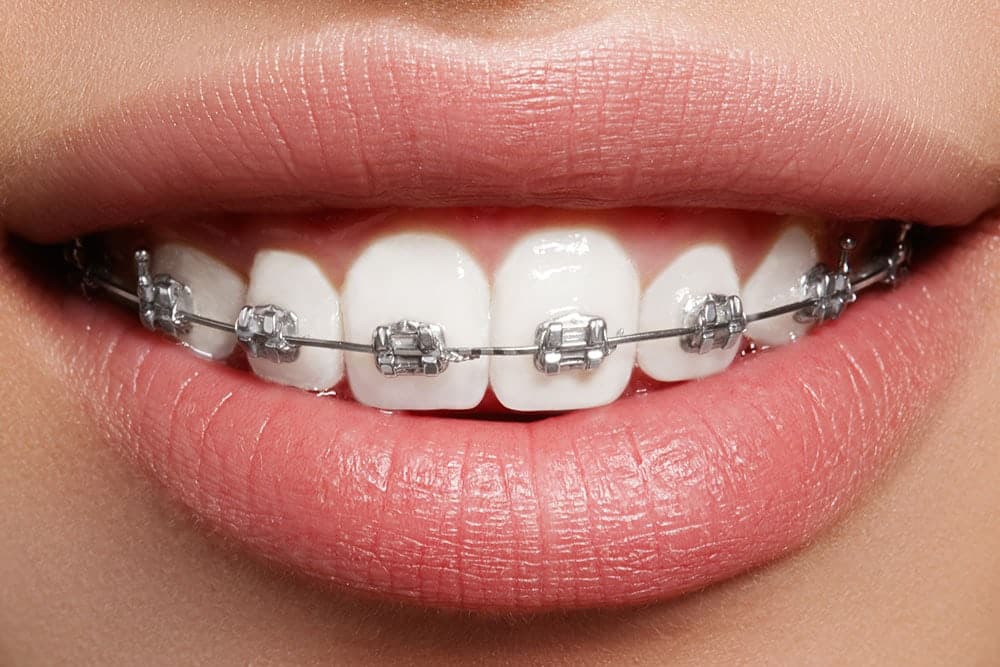We know you may have plenty of questions when it comes to your orthodontic treatment. Our team wants to make sure you have all the answers and support you need to get started on your orthodontic journey to a better smile. It is always a good idea to learn everything you can about braces if you are about to start or have started treatment.
The Different Parts of Braces
Getting braces can be a big change. To be more comfortable before you begin treatment, it’s helpful to know what the different parts of braces are and what they do. Also, if you ever encounter a problem, it will be easier to effectively communicate the issue to your orthodontist or their team.
Bands

Bands go around the back teeth, or molars. Your orthodontist will use their dental instruments to put them around the back teeth and make sure they are fitting correctly. The orthodontic bands usually are made with attachments so arch wires can go through them. The orthodontist will use a special dental cement to make sure they stay on your teeth.
Brackets

The most popular type of braces requires brackets on each tooth. Brackets are small, rectangular pieces cemented to the front of your teeth. They are what holds the arch wire in place against your teeth. These brackets come in silver or gold stainless steel, or they can be clear or tooth-colored ceramic to blend in with your teeth.
If your child wants to add a little fun to their braces, they can get brackets in different shapes, like footballs, stars, and hearts. These brackets work exactly the same as regular ones, so treatment is just as effective.
Some brackets have little hooks that are used when correcting bite issues. Tiny rubber bands are connected to these hooks on the top and bottom teeth, which gradually moves the jaws to their proper positions.
For example, if a patient has an overbite, bands can be attached to brackets on the top teeth toward the front of the mouth and on the bottom teeth in the back of the mouth to gradually bring the jaw back to where it should be. For underbites, the orientation of the bands is reversed.
Arch Wires
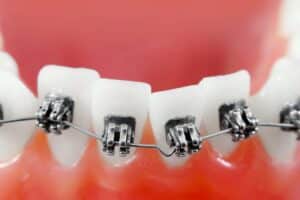
Arch wires are the real reason your teeth move. Arch wires are thin strands of metal that are attached to each bracket with little clips built into the bracket (self-ligating braces) or with small rubber bands, which are discussed below. A thicker wire is stronger, which usually creates more movement in the teeth than a thinner wire. Arch wires are often switched out at your follow-up appointments to change the tension on the teeth.
Ligatures
These are the part of braces kids and teens get excited about. They plan their outfits around them, and celebrate upcoming holidays with them. Ligatures are the little rubber bands that connect the wires to the brackets. They come in a bunch of colors and are replaced during every adjustment. Patients can choose different color combinations each time, making it fun to go for their appointments. At Smith Orthodontics, patients have a whole host of colorful ligature options to help express themselves. We know that no two patients are alike, so we like to let patients customize their own smile.
Coil Springs and Power Chains
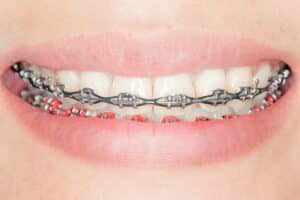
Coil springs are used when two teeth are too close together. The coil spring goes over the arch wire and is used to move the teeth away from each other. Power chains are kind of the opposite. They are little elastic or wire rings that are linked together. They are used to help create space or an opening between teeth.
Buccal Tube
A buccal tube small metal part welded on the outside of a molar band. The molar band contains slots to hold archwires, lip bumpers, facebows, and other things your orthodontist uses to move your teeth. Think of the buccal tube as an extension cord allowing all the other parts of your braces to work together.
Separators
Separators are tiny rubber bands or springs your orthodontist places between your back teeth. These separators prepare your mouth for braces by creating a small gap between these teeth. This space allows for the placement of a metal band around your molar, which anchors your braces in your mouth.
How the Different Parts of Braces All Come Together
Now that you know the different parts of braces and what they do, here’s how all those parts come together to give you a straighter, healthier smile. Braces work to shift teeth into alignment in a way that helps alleviate orthodontic concerns.
Once your orthodontist removes your braces, it’s important to continue to wear a retainer to allow your teeth to stay in place. Your teeth will continue to shift for the rest of your life. Retainers help you maintain that perfect smile you worked so hard to achieve – but only if you wear them as directed. Your orthodontist will work with you to ensure you have the best post-braces treatment plan to help you maintain that gorgeous smile.
Whether you already have braces or are thinking about getting them, knowing how they work and the important role each part plays in straightening your teeth can make them less intimidating and help you understand why you need to take care of them and follow your orthodontist’s instructions.
If you have questions about braces, please don’t hesitate to call Smith Orthodontics or schedule an appointment to come see us!
